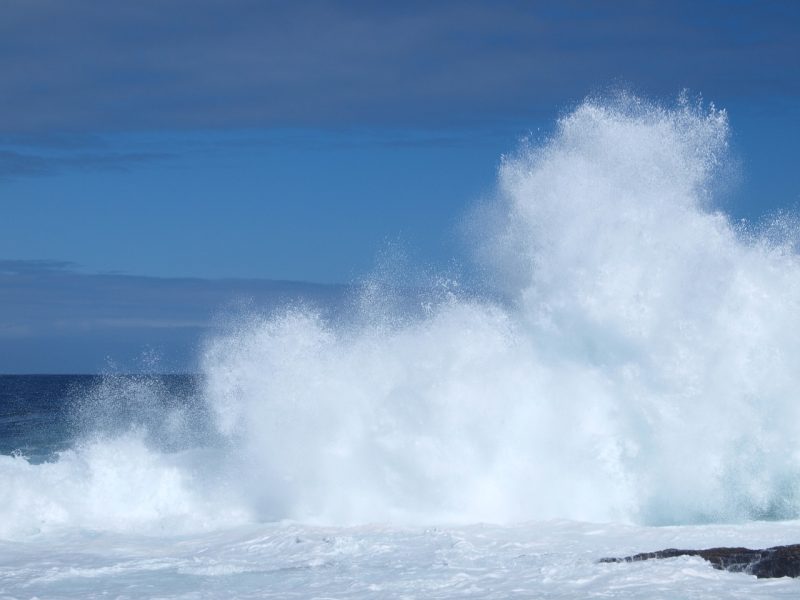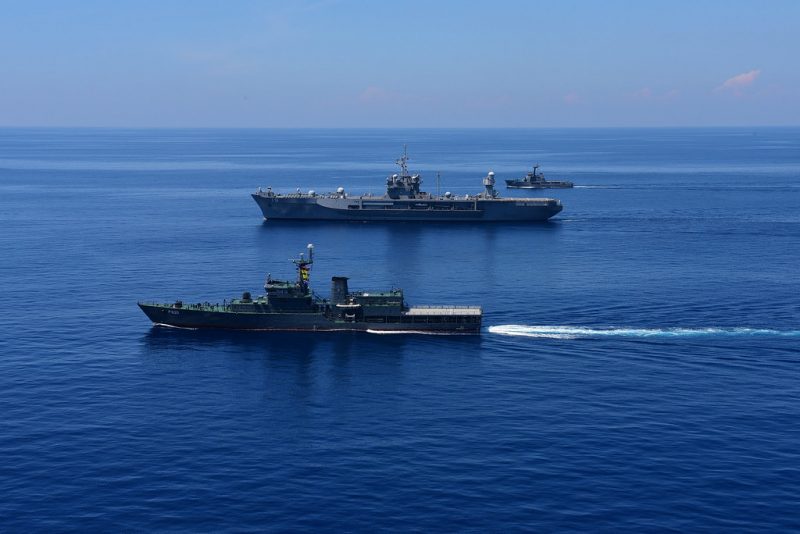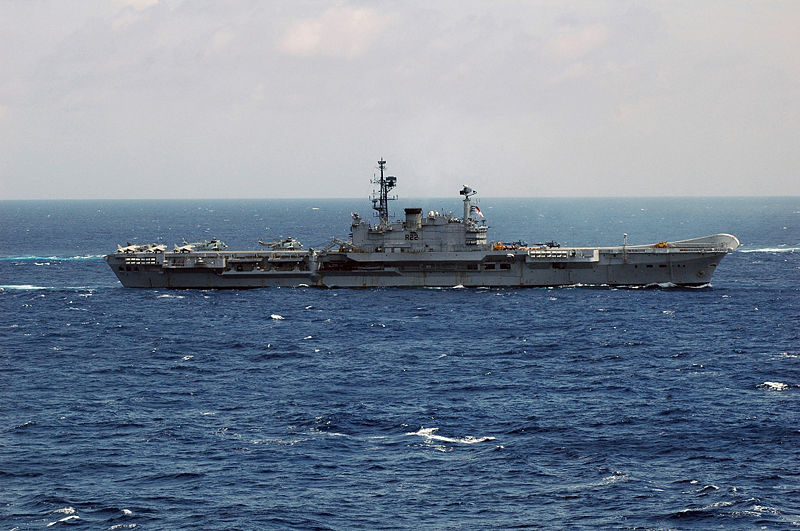Recent military exercises in the Indian Ocean conducted by Eurasian powers have also been of interest to regional outsiders such as the United States, as they are a certain sign of the rising importance of these waters in the context of security, competition and control.
From the point of view of classical geopolitics, the Indian Ocean is significant element of the outer crescent of the World Island. It is adjoined to the inner crescent which represents rimland of Eurasia. From the days of the Cold War, this zone was under the control of the United States, with Navy and Air Force military bases extending from Persian Gulf to Diego Garcia. During the unipolar moment from 1991 till 2010s, Washington still felt comfortable in its position; however, over the last few years, the situation has changed dramatically.
The rise of Chinese military power, a decrease of the GDP of the United States and the soft isolationism of the Donald Trump administration have opened this region to important transformations. Regional players also looking to change the status quo and gain economic benefits from sea line communications useful for trade routes and energy supplies.
The Chinese ‘String of Pearls’ strategy has become the defacto maritime policy of Beijing, which has established an effective and sustainable presence in the Indian Ocean. There are many pillars of such strategy: Habmantota port in Sri Lanka, Gwadar port in Pakistan, Kyaukpyu port in Myanmar, Chittagong in Bangladesh, Marao on the Maldives, Istmo de Kra in Thailand (with construction of the channel) and a base in Djibouti.
Upcoming Indian Ocean response efforts include the Duqm naval base in Oman, Assumption Island, the Agalega port on the Seychelles and a listening post on Madagascar.

Needpix.com
India has a strong motivation to get more involved in affairs in the Indian Ocean. Firstly, there are economic reasons, such as the need to secure energy and commodity trade routes by sea. Secondly, there is the question of deterrence and security in regards to rivalries with neighboring countries such as Pakistan and China, as well as unconventional threats such as maritime piracy and terrorism. New Delhi is rapidly modernizing its own navy and paying closer attention to both Indian and Pacific oceans. In the past, India’s strategic perceptions remained overwhelmingly land-centric, while maritime thinking and the significance of naval power took a secondary spot in the Indian strategic and security focus. However, a surge in the country’s economy and post-9/11 developments rapidly transformed the country’s strategic culture.
Beside structural changes in the armed forces and maritime thinking (both strategy and doctrinal growth), the country’s naval ambitions have become more pronounced. The Indian Navy’s role changed from mere coastal defence to power projection, at least according to the books. India also welcomed a new geographical construct, i.e., ‘the Indo-Pacific’ proposed by the United States.
On June 1, 2019 the Pentagon officially unveiled a new military strategy for the Indo-Pacific region. The term “Indo-Pacific Region” is a novelty of American geostrategic thought (introduced into doctrinal documents just a year ago). It has now become a priority for the Pentagon, as stated in the preamble to the documents detailing the strategy. It is, above all, about containing China (note that China is excluded by India from international maritime drills Milan 2020, while 41 countries, including the US and Russia, will participate). However, there is much more included in the doctrine: this strategy draws attention to Russia and Arctic maritime route as well.
If India envisions itself as a key enabler of maritime power projection, there is a critical mismatch between its stated objectives and the actual maritime military potential of the Indian navy. This is evident from several major accidents over the past few years, which practically validated the void in Indian Navy’s stated doctrinal philosophy and real combat potential.
The current tensions between India, Pakistan and China may lead to an escalation of the crisis and the involvement of more actors such Iran, Arabic countries, Russia etc.
Indian attempts to pursue multilateral options need to be analyzed from this perspective. In march 2019 near Goa, India conducted joint navy exercises Varuna-2019 with France. In April 2019, the US and India held anti-submarine warfare drills in the heart of Indian Ocean, including the Diego-Garcia base. It was the first time these two countries collaborated in this type of military maneuver.
In September 2019, the naval forces of India, Japan and the United States participate in the trilateral maritime annual 10-days exercise called “Malabar,” this time off the coast of Sasebo, Japan.
Here we can see the enlargement of India’s security-defense framework includes a growing risk of pro-atlantic turn, i.e. full support for US strategy in the region, with India essentially acting as a new NATO partner.
In 2018, when the United States created the new Indo-Pacific Command (USINDOPACOM), Mike Pompeo participated in the ASEAN summit in August where he promised to allocate $300 million to strengthening the security of the new region.
In September 2018, the United States signed a special agreement in the field of military cooperation with India— The Communications Compatibility and Security Agreement (COMCASA), which involves the exchange of data, the intensification of joint exercises and the supply of certain types of American weapons to India.
It is worth noting that Washington has been using this agreement as a tool to put political pressure on Indian leadership. The US’ administration is still concerned about India’s possible purchase of Russian S-400 systems, as well as other weapons (India still is the main buyer of the Soviet/Russian weapon systems).

Flickr
Although USINDOPACOM now has more than 2,000 aircraft, 200 ships and submarines, as well as 370,000 personnel, the US military still intends to increase this armada, attracting partners from other countries. Particular emphasis is placed on Japan, the island of Guam, South Korea, Australia, the Philippines, Thailand, Singapore, Taiwan, New Zealand, India, Sri Lanka, Maldives, Bangladesh, Vietnam, Indonesia, Malaysia, Brunei and Cambodia. The list also includes Mongolia, Nepal and Laos, which do not have access to the sea.
Iran is looking for a more secure environment to facilitate oil trade, especially because of the sanctions regime imposed by the United States and its allies. The Hormuz Strait is key avenue in the Arabic sea in the western part of the Indian Ocean. Escalations are very possible as a result of US military presence in the area.
The North-West side of the Indian Ocean has a few critical elements. The first is that the coast line of Yemen is still torn by war. The second is that the entry to the Read Sea serves as connecting hub between the Mediterranean and Europe. Huge amounts of trade flow through this hub. Third is the African horn which is deeply affected by piracy and illicit activity. All three elements are connected with each other.
Securing the western side of Indian Ocean means dealing with African countries.
On the north side of the Indian Ocean, Pakistan has access to warm waters. Islamabad still has limited opportunity to build up a Navy, and needs to pay attention to its own economic interests in Indian Ocean. And after launching the CPEC project, the Gwadar port became more important. This strategy has been described as a game changer for the region, it is the central element to securing the CPEC. In February 2019, Pakistan organized the AMAN exercises including search and rescue operations, gunnery drills, anti-piracy operational demonstrations, replenishment at sea, anti-surface/anti-submarine warfare and interdiction maneuvers. Turkey, the US, the UK, China, Australia, Indonesia, Sri Lanka, Malaysia and Oman all participated. In general, Pakistan’s foreign policy under Imran Khan’s governance has been moderate, and there have been concrete efforts toward peace building.
France also has a presence in Indian Ocean on the Reunion Island and Comoro Islands.
A large number of different actors in a single area implies conflicts of interest, especially as there are no general agreements in regard to the Indian Ocean. The actors involved should consider adopting international protocols for the area in the near future in order to avoid hostility.

















Leave a Reply